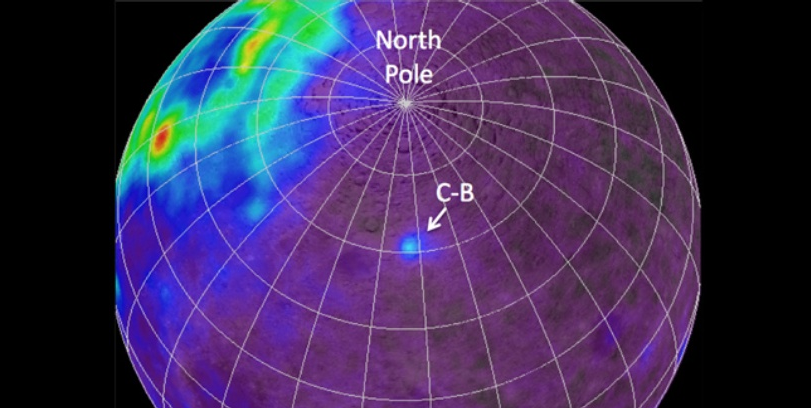
The farside of the moon may have had some extremely explosive volcanic eruptions hundreds of millions of years ago. The findings, reported in a paper submitted to the Journal of Geophysical Research and posted September 3 on arXiv.org, appear to be the first evidence of vigorous, explosive silica volcanism on the moon. In 2011, scientists identified a curious “hot spot” on the far side of the Moon that appears to be a small volcanic province created by the upwelling of silicic magma. The unusual location of the province and the surprising composition of the lava that formed it offer tantalizing clues to the Moon’s thermal history. The hot spot is a concentration of a radioactive element thorium sitting between the very large and ancient impact craters Compton and Belkovich that was first detected by Lunar Prospector’s gamma-ray spectrometer in 1998. The Compton-Belkovich Thorium Anomaly, as it is called, appears as a bull’s-eye when the spectrometer data are projected onto a map, with the highest thorium concentration at its center.
Now a team of researchers led by scientists from Durham University in UK, reconstructs the abundance of thorium near the Compton-Belkovich Volcanic Complex, using data from the Lunar Prospector Gamma Ray Spectrometer. They enhance the resolution via a pixon image reconstruction technique, and find that the thorium is distributed over a larger (40 km × 75 km) area than the (25 km × 35 km) high albedo region normally associated with Compton-Belkovich.
Their reconstructions show that inside this region, the thorium concentration is 15−33 ppm. The team also finds additional thorium, spread up to 300 km eastward of the complex at ∼ 2 ppm.
The thorium must have been deposited during the formation of the volcanic complex, because subsequent lateral transport mechanisms, such as small impacts, are unable to move sufficient material. The morphology of the feature is consistent with pyroclastic dispersal and they conclude that the present distribution of thorium was likely created by the explosive eruption of silicic magma.
"We have used the pixon image reconstruction method to produce the highest resolution map of the thorium distribution around the Compton-Belkovich Volcanic Complex to date," the team concludes.




Comments